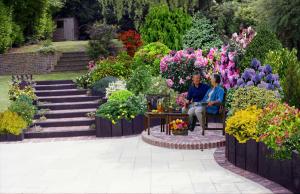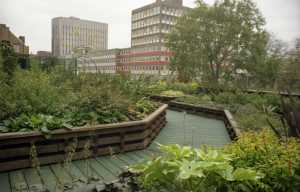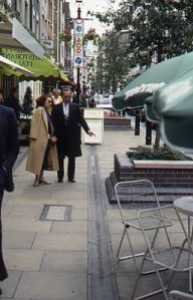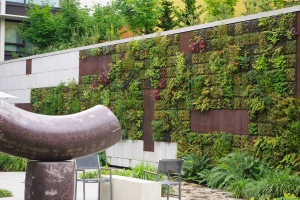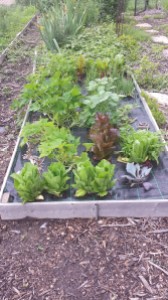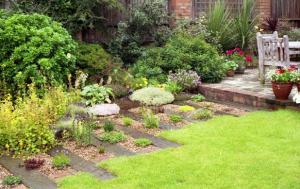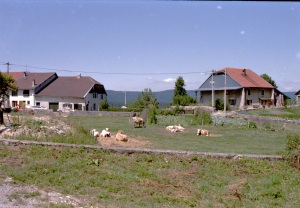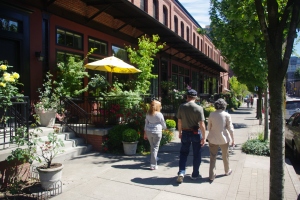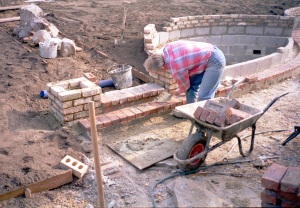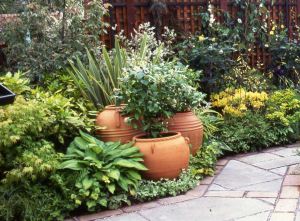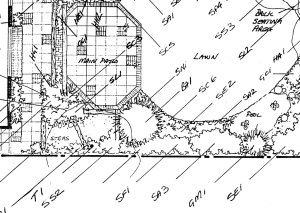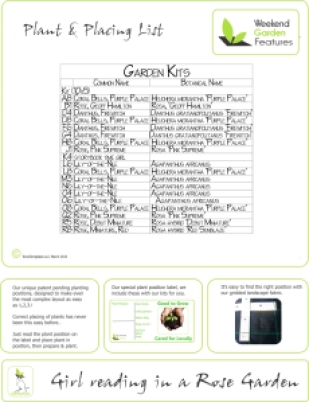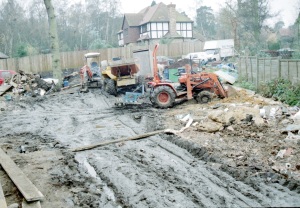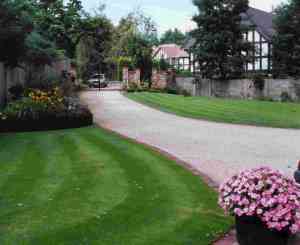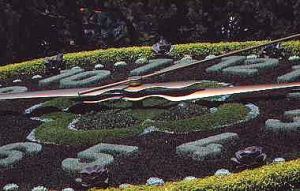Landscape Design & Build
A collection of chapters on a career spanning 40 years of award-winning landscape design and build
-
Growing Trends is listened to in 48 countries, our new program is all about people like you, from all over the world.
We would like to hear from you with ideas, comments and suggestions for our shows drop us a line at chris@chriscoope.com
We have been making changes to Growing Trends our internet based radio show, which we started back in 2015

Time to Eat – All about growing Herbs & Vegetables
Gardenesque – Everything to do with Gardens & Landscapes
World Wide Wesponsibility – A more serious look at sustainability and how we might all help our planet.
Face Time – Interviews with experts on topics of interest
Book Reviews – Interviews with authors of books relating to the environment, nature and garden landscaping.
Perhaps we could interview you for our Face Time segment? …. just drop us a line and we will contact you.
[contact-form-7 id=”781″ title=”Contact form 1″]
Views: 176
- Edibles, Food, Gardening, gardens, Healthy Living, Home & Garden, Landscape design, Landscapes & Gardens, Nature, park, Vegetable Growing
What do our kids really know about plants?
I was reading an interesting article the other day, it was discussing what today’s children know about plants.
The part that caused me to sit up and wonder was this line.. “Today’s children can identify about 1000 company logos but only identify 10 plants outside”
I wonder how accurate this statement is?
So a quick test – could you identify the plant below?
or perhaps this one.?
Thinking a little about it, brings to mind the simple realization that many children do not really understand where much of our food comes from.
We really need to change this for many reasons, perhaps our internet radio show, can help?

Listen at www.grotrends.com We want to engage ‘Granny Growers’ and introduce them to the ‘Growing Uppers’ , to start this rolling we’re heading off to interview a few senior citizens in our retirement community, to ask them what they learned and how they think we can help our grand children.
if you have some ideas , we would love to hear from you to… just drop us a line
Your message has been sent
Views: 112
-
Are you planning to add to your landscape?
Winter Time
As autumn and winter move in, with leaves changing into many hues of red and gold before falling to the ground.
The weather starts to turn chilly, the growing season is coming to an end or is it?
Some plants will head towards dormancy, others being more frost resistant will provide the last gasps of color, before winter sets in.
For the luckier ones living in warmer climates, not so much changes.

If only we could all enjoy everyday scenes like this ! Climate Change
For some others the climate has changed enough to wonder if it’s time to convert the ubiquitous lawns.
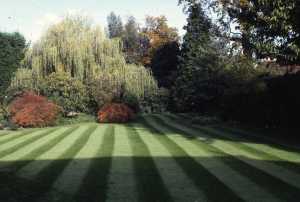
Are we going to have to change this view? Maybe into something more akin to a dessert landscape or perhaps a Mediterranean or Xeriscape landscape.

Very low maintenance, Mediterranean style Time to Plan
Now is a great time to start planning any changes as you can follow some simple guidelines.
First establish a budget. Now look at the existing and consider what you might want to change and why.
Write down a wish list of likes and dislikes, add if I could I would do this, etc,.
Design
Now it’s time to decide if you want to do the work your self?
Or find a contractor to start gathering information on materials and costs etc.
Or engage a designer who can work with you to produce a plan and a program?
Each method has it’s pros and cons. Is often decided by available budget or available time to allocate to the project.
My experience has been that most busy people are also quite successful and can therefore afford to engage a designer
They also tend to like to know what they are getting into before they start , so a design works great for them, they also like detail.

Landscape Plan Practical people can often gain most from actually working on the project themselves.
They tend to be natural problem solvers and enjoy the discovery of ‘how to achieve something’
The best advice I learned was to consider what you would like in say 5 years time, as this is often the time when any changes are going to look their best.
It is also a time to consider where you may be in your own life cycle, for example age of children, type of free time available etc.

It’s fun here… There is a “Growing Trend’ towards sustainability.
Growing one’s own food.
Now is a great time to look at all the methods available and how much time should be allocated to such endeavors.

An example from a Chelsea Flower Show exhibit Listen to ideas from experts at Growing Trends
Your message has been sent
Views: 122
-
Fall & Spring Program
Our internet radio show Growing Trends has attracted listeners from across the globe, we’ve been really amazed how many people comment and listen – thank you all so much, it really is a lot of fun to produce.
We would love to hear from you with your ideas & suggestions on the shows content.
We’ve interviewed some amazing people, from many different walks of life, with many differing interests in our outside environment – from a keen homeowner gardener, to a commercial grower, to an environmentalist to an estate gardener, to a very knowledgeable bee keeper, to an expert consultant. All have fascinating insights into the hugely diverse world of horticulture and our environment.
We are making some programming adjustments to our fall schedule to better reflect this diverse interest.
You can still listen daily at 1pm & 7pm on www.cravingtalkradio.com, or download direct from the site as a podcast, or just visit www.grotrends.com our own web site and click on the ‘listen here’ page.
Our new segments.
Time to Eat – Everything about growing your own food
.Gardenesque – All about gardens & landscapes.
World Wide Wesponsibility – A little more serious about sustainability and how we can be good custodians of our planet.
Face Time – Interviews with experts on topics of interest.
Have an idea for an interview ? send us an email and we will be in touch.. info@grotrends.com
Drop us a line with your comments & suggestions, or even a request for an interview.. you can complete the form below or just email us Ann & Chris at info@grotrends.com
Your message has been sent
Views: 83
- Edibles, Food, Gardening, gardens, Healthy Living, Home & Garden, Landscapes & Gardens, Nature, park, Vegetable Growing
How do you see garden landscapes evolving ?
Many years ago, we often introduced new ideas and products into our designs on a fairly regular basis. Some were because we developed our own ideas, products and subsequently ‘different’ offerings, we then ‘sold’ them to our customers.
When we started offering irrigation systems, we had to find a way to sell them to our more affluent customers, without making the costs too high, but most importantly by not disrupting or destroying the landscapes we had put in only a few years earlier.

Hydraulically installed irrigation We achieved this by finding a rather interesting hydraulic mole from Germany that used compressed air, it worked really well at a depth of 900mm and was pumped a distance of around 5m , which when reversed pulled the water pipe back through the drilled hole. This simple tool saved huge amounts of time and reinstatement costs – more importantly it amazed our clients who were thrilled that we could install such sophisticated systems without a huge amount of disruption.
Next came low voltage lighting systems, which made landscape lighting safe and easy to instal, the picture below isn’t our work it’s a Park in Paris, but it serves it’s purpose quite well.

Park in Paris Today we seem to have slowed down on major changes or have we?
Commercially vertical walled gardens are becoming quite popular and are definitely a recent development.
Whilst in Gardens we have built for over 30 years eco friendly ‘Green Retaining Walls’ such as this one

Treated Structural Green Wall Roof Gardens have been around for years, we were designing and building them back in the distant 1980’s

Wooden pathway on Roof Garden Home owners are developing a taste for their own food production.

An example from a Chelsea Flower Show exhibit Herb & Vegetable gardening is becoming very popular today.
I’m seeing a huge demand for food production, but currently the solutions are traditional cold frames, cloches or greenhouses, all very time consuming and with varying degrees of cost.
Today with all the concerns over GMO crops, with apparent excessive use of pesticides, more and more people are either buying from local organic farmers or starting out on the incredibly satisfying journey of producing their own fruit and vegetables.
We’ve been developing an easy to use kit that makes selection, planting and growing much easier and for a much longer time frame.
We call it ‘Hort Cuisine’ our way of saying it’s fun, friendly and offers tasty treats when you gather your crops.
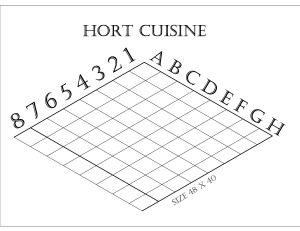
Hort Cuisine Grid The patented system enables almost limitless combinations of plants to be selected, enabling designs for any climate region.
Creating those beautiful ‘Knot’ gardens just became a simple process.
So here are a few questions……
What new ideas have you seen recently?
What would you like to see developed?
In the last 5 years what is the best landscape invention you’ve seen?
What would your customers like to add to their garden landscape?
Drop us a line with your replies we will have a follow up blog shortly.
or follow our internet radio show at www.grotrends.com
Your message has been sent
Views: 65
- Edibles, Food, Gardening, gardens, Healthy Living, Home & Garden, Landscapes & Gardens, Nature, Vegetable Growing
Where do you find inspiration….
Changing a Landscape.
Starting with an existing landscape is always a challenge..
How do you develop an idea?
Does it just grow on you?
I’ve often been asked this seemingly simple question
‘Where do you find your inspiration? ‘ or perhaps it might be
‘ Where do you get your ideas from?’ .
At first it was from seeing new things and figuring we could apply them to specific projects we were working on, albeit with a different slant, or approach. As we gained more and more knowledge ( experience) we instinctively knew what would work and what would require more thought ( more thought equates to time, experimentation and thus expense) – That’s not to say we didn’t make errors, because we surely did, luckily most times these ‘mistakes’ were of a limited nature, involving us spending more time than we expected.
I’ve always been happy to let staff experiment as long as there’s a learning process, in which they figure that making the same mistake more than once is avoidable. I’ve also found that the good old notebook and pencil is an invaluable tool, even today, writing information down has saved all manner of accidents from occurring, both financial and construction wise.
The beginnings of a well
The finished well, using bricks, oak and peg tiles.
Today our emphasis is firmly on simplifying ‘How to ‘ , in particular , with the huge changes to the worlds weather, we’ve been working hard on adapting our patented techniques so that home owners growing their own veggies & herbs in a quick ,efficiently and simply method as possible.
We are also close to enabling an 11 month growing cycle for anyone living in zones 5 and above.
Using well tried & tested, mainly low tech solutions , to achieve this.
Our “Hort Cuisine Kit” will be available soon !

Hort Cuisine Grid Using our internet radio show & this blog , has enabled us to reach hither too undreamed of audiences across the world – currently we have been listened to or read in 43 countries, so a big thank you to you all for keeping on reading.

Growing Trends a new style of garden Show on www.grotrends.com We would love to hear from you – Ann my co – host and I are hoping we can find as many ‘Granny Growers’ as possible and link them to ‘Growing Uppers’ ( our grandchildren ) , so that the knowledge, skills and techniques learned over generations of growing our own food, can be passed down before we all succumb to the mass produced, widely transported, heavily chemically sprayed, produce that has changed our once balanced diets.
Your message has been sent
Views: 45
- Edibles, Food, Gardening, gardens, Healthy Living, Home & Garden, Landscapes & Gardens, Nature, park, Vegetable Growing
How much do we really know about soil?
“We know more about the movement of celestial bodies than about the soil underfoot.” – Leonardo Da Vinci
Living a healthy lifestyle can mean many things, regular sleep, exercise, reduced stress, enjoying work, balanced eating, learning something new everyday, exploring new sights, meeting friends & relatives or a gentle stroll around a park.
Almost all involve going outside at some stage, or even spending time outside. Like this walk across the Jura Mountains in France.
When we were kids we used to dig in the ‘dirt’ , now it turns out this passed beneficial microbes to us. Plenty of microbes on the Farm.
Today we hear of parks and recreations departments that are banning pesticides and herbicides from play areas, and sports fields – 40 years ago we were more concerned with flint stones breaking the surface of the grass and ‘skinning’ kids knees when they played sports.
Field hockey needed a very even playing surface of grass to be played well, so it was often heavily compacted and over fed to keep the grass green & growing !
Research shows time and again how beneficial taking a walk in a woodland is, or sitting under a tree, or making a garden or landscape.
Yet most of us, move from one hermetically sealed air conditioned room, to our hermetically sealed air conditioned car,
to our hermetically sealed air conditioned office – is it any wonder we are losing a connection with nature?
Those folks lucky enough to live outside cities and away from the urban sprawl , are indeed fortunate.
They can leave windows open at night, refreshing the air inside, removing stale contaminated air, rarely using air conditioning.
We figured a hedge around the house and a tree canopy above was more than enough to reduce the inside temperature 20 degrees or more. It creates its own microclimate between the hedge & the house.while also providing a fair degree of privacy.
The planning process hasn’t helped much either with 140ft set backs, single story developments , individual car parking areas for each business and strip malls, that encourage you to ‘hop’ in the car to go from store to store.
Then same style sub divisions, with all vegetation ‘stripped’ , the topsoil structure almost non-existent at the construction stage, then hardly any landscaping to create interest, shade, or harmony with surrounding areas.
In fact it wouldn’t be too far to say that the effect is boring !
I wonder how many years it takes before this picture changes?
All this contributes to built in obsolescence within 25 years, the developments have very little diversity of style and worse a total lack of walking from home to the stores, – one of the healthiest pursuits for us all.
One of the major advantages of living in towns or cities is this easy connection with homes, stores, work places and amenities.
We all tend to be creatures of habit, so this routine is a hard one to alter
There are signs of a healthier approach.
Mass transit provides a wealth of benefits, less pollution, easier and quicker commuter travelling, safer travelling, an opportunity to connect with fellow citizens. A more relaxed journey.
Green walls in the urban environment soften an otherwise ‘hard’ landscape, reducing the carbon footprint of the area, making a much more ‘pleasing’ view.
Roof gardens make a more focused impact, they improve the carbon foot print, offer a new habitat and an amenity for the buildings users.
It seems all those ideas, methods and activities from yesteryear were not all that bad for us.
Our connection with nature is again expanding with more and more people exploring the option to grow their own food, or seek out farmers markets.
I suspect for this to become even more popular there will be a need to initially at least simplify the mysteries of growing your own?
The Community Garden or Allotment is a great way to learn the ‘tricks of the trade’ – these are either individual growing areas ‘Allotments’ or the more common these days communal ‘Community Garden’
Of course there is the local ‘Pick your Own’ farms for all those inseason goodies.
From ‘Farm to Table’ might be best said as from ‘Grower to Consumer’ – if this were local, it would have a huge impact on carbon emission reductions ( a lettuce travels 1400 miles to reach your table, not sure how that could ever be described as fresh!).
The more we as professionals make this process easier the greater the likely uptake by households in towns and cities, where new skills will need to be developed.
A really easy start.
A stacked group of herbs, perfect for a compact space.
or much more complex, this lovely exhibition garden shows how to create small garden boxes of produce.
Now all we need is a simple method for the consumer… It will need to have an option which includes a growing medium as many urban yards have very poor soil conditions.
This system can be found at www.picagardi.com
Using a unique patented layout grid. enabling almost anyone to place plants in the correct positions is an option.
Listen to our up coming internet radio show all about developing gardens at www.grotrends.com we call it ‘Hort Cusine’ !

Hort Cuisine Grid The very popular and effective Square Foot Gardening Foundation, developed by Mel Bartholomew has been around for many years, with countless books, examples and users.
As has the New Organic Grower & Four Season Harvest to name but a few from Eliot Coleman, an amazing grower in Maine.
It’s time to really try and add herbs & veggies into our urban landscapes.
We as landscape professionals need to promote home grown food more when we plan new landscapes for clients.
Views: 165
-
So what’s really new today in landscape work?
Looking back over a good few years, it seems to me that only a few things have changed.
Mostly the changes are in office equipment,our office wasn’t particularly fast to adapt to CAD or computerised pricing, ( which as I recall we started in earnest around 1990) we didn’t produce thousands of drawings, although with three full time designers we might have been able to complete our standard detail book quicker.
What we did have, which was invaluable, was a huge collection of standard minute values for thousands of manual site operations, gathered by a group of work study techs who followed us for years.
These values are still useful today, as I’ve found a ‘rate’ for a job is no where near what the job costs with overhead & profits or is worth in every situation.
Oddly, when you take a real look, it seems not too many on- site tools have changed very much over the years, the hammer remains the same,the pick, the saw, the rake, as does the garden fork, the trowel, the cement mixer, the plate compactor – all are virtually the same as they were years ago.
The one exception being perhaps the Dingo or it’s derivative…
This picture is a classic example, this car park in Kent was being resurfaced in 1978, the equipment although not lazer guided isn’t far removed from today’s.
Engines, drive trains, hydraulics, not that many really new tools, and a few altered methods, such as rotary grass cutting, self sealing sand, geotextile fabrics, and the use of plastics have all appeared – Some , I wonder for how long?
Is it time for a revolution in equipment ? if so, I wonder what will appear ? or has the demise of manufacturing reduced us to just accepting products that are derived from abroad ? Do you have a wish or an idea?
I suspect the humble wheel will take some beating over the next generation.
As a Landscape Design & Build professional, I’ve visited literally thousands of homes over the years, talked to the owners, sold them on design & build, managed the project , with a fantastic team who helped us win a large number awards.
As a Landscape Contractor, I’ve read, priced, won & lost , then programmed, then managed thousands of projects designed by other companies or individuals, with the team still winning a large number of awards in the process.
There have always been the same few common traits.
An agreed Design was produced, with an agreed priced Bill of Quantities.
The Designer kept in touch with the project until completion. – you can see him just in this picture below.

After working a little magic ! The Foreman, was in charge of the site ( our man on the site) stayed on the site with his team,until the project was completed.
We paid particular attention to detail, keeping the sites clean & tidy.
The client made stage payments to an agreed schedule.
We avoided extras, unless they were essential.
We under promised & over supplied. – the weather was almost always the one item we were unable to control.
We sent our aftercare folks in to show the client how to keep his newly paid for project in good order – irrespective of if we had an aftercare contract. ( Finished photographs are great for the portfolio and are easier to take if the site looks great, plus we treated every job as a potential award winner. !)

Sometimes I would call in and cut the clients grass to get away from the office. We were rarely the cheapest price available, we & the client knew this, we did have a professionally staffed office, we employed our own designers, landscape architects, contracts managers, and building staff who were all fully equipped, with all the necessary tools and machines.
We avoided heavy machinery in gardens preferring to use tracked equipment that didn’t compact the ground too heavily, we hardly ever used ‘Bobcat’s’ , but always used min-360 excavators, and tracked carriers.
The mini-tractor being the exception as it was so useful, perhaps with the advent of the dingo that’s not the case anymore ?
When we installed irrigation we preferred to use hydraulic powered horizontal augers which left almost no mess.
This system was really effective, it used an air compressor, but was able to pull the pipe back through the hole just formed, it worked great with Toro 300 series heads for example.
We preferred to work with natural materials ( like bricks, timber, natural paving cut to rectangles) to artificial ( concrete, concrete blocks, plastic, etc.,)
We always kept the conversations semi formal whilst the job progressed, not becoming too familiar was a huge benefit at times. Once the project was finished we relaxed our formal approach.
It wasn’t possible to not have misunderstandings on occasions, however we documented everything, and on the very rare moments when clients became agitated we gently showed what had been agreed and how we could adapt this to their new wishes – we always remembered that this was our job, we were the experts, but it was their project!
We often acted as Designer, Surveyor, Builder and Quality Controller for the Client, who often had scant knowledge of construction issues, so we tended to be much more, should I say tolerant in these situations.
If we were dealing with fellow professionals, then we played hard ball with the best of them !
Ann & I have started a radio show where we interview Clients, Designers, Creators, Maintainers, and the experts that help them, you can listen to a show here or even download for later – Growing Trends
If you would like to be considered for a show, do drop us a line and tell us why, we are now heard or read in 43 countries !
Ann & Chris
Your message has been sent
Views: 77
-
Could we ask for a little help from you?
I’ve been really surprised at all the positive comments the site has been generating from everyone – Thank you all so much, it’s fun to write, improves my awful spelling, maybe my grammar as well ?
You can let me know on that one !
Some of you asked if I would make it possible to donate on this site, I’ve tried to avoid that, as well as adverts as I was trying to be impartial, with the content.
As you may know we do have a fun internet radio show, where we interview folks from around the globe about their Gardens & Landscapes.

Find some inspiration for your Yard today… When we started this radio show the aim was to find interesting people who had a passion for their Garden or Landscapes. Little did we know what would happen. In just a few months we have an audience stretching across the globe in 43 countries.
We soon added a web site www.grotrends.com to provide details of schedules, information on guests and sponsors, and a growing information area with details of techniques, ideas and examples of projects.
The show Growing Trends concentrates on the clients, the designers, the creators, the maintainers and the experts that help them, we would welcome any suggestions on who we should contact – the schedule is filling quickly, which brings me on to how you can help.
We have two one hour shows a day seven days a week, with a little funding help we can update the interviews more often, and tell the story of you, or your friends work, or your garden or landscape.
Can you help us in just a small way ? Contributing just $5 ?
Here’s the link to StartSomeGood the crowdfunding source we are using for this fund raising campaign
Growing Trends is fun, friendly, informative, interesting, amusing & entertaining.
This one acre pond has a water change almost once per hour !
A final interesting project from just outside New York. This fully structural gravity wall is almost 27ft high !
Note the access is less than 4ft !
We really would appreciate your support, so we can interview maybe you, or your colleagues or friends, across the globe – thank you all for your support & comments.
You can also find us on Facebook
Ann & Chris.
Your message has been sent
Views: 106
-
Planting plans made easy to use at home!
It’s been 40 years since I first grappled with a traditional planting plan. All those lovely latin names – like Fagus sylvatica, Fritillaria meleagris, etc.,
In the drawing office, it was a matter of using a thick graph paper so the electric eraser didn’t make lots of little holes in the paper as we repositioned plants, or corrected the many mistakes or changes in mind. Sometimes we used a plant stamp, then labelled by hand. As you can see interpreting the labels isn’t easy.
The whole process was time consuming, difficult to make into a quality finished drawing.
This next version once CAD was introcuded is a combination of hand drawn and CAD drawn, easier to interpret, but still not easy to set out.

Using CAD system On site, in those days these were cumbersome beasts, usually printed on dyeline, so it was dark, difficult to read with scribblings and such in the margin, fragile, and ruined once wet. Wrapping in plastic sort of helped, cutting into smaller sections then laminating was better..
Wielding one of these around on a damp morning picking out the plants, with the planting foreman, and then placing took for ever.
Trying to mark off those plants you had placed and then moving on to the next batch, with a few areas missing….
For some odd reason even though the nursery managed to price all the plants, they never seemed to be able to deliver them all to site completely in one go, or even to the company yard, so the whole process was both time consuming, expensive and worse annoying to a client who by now had had enough of three or five members of staff working in what was their space.
I hear a gentle nod of agreement or perhaps sigh of frustration?
It got so bad that we used to change our standard estimate to something like..
” To carefully prepare ground, incorporating peat and fertilizer at each planting station, to supply & plant in ‘xxx’ number of flowering & ornamental shrubs, carefully watering in on completion, then applying a 50 mm depth of planting mulch”
Here’s a plan without specifics..in this case a veggie garden area.
This gave us a contractual escape clause, but wasn’t what we wanted to portray to our clients. We even tried to restrict the planting selection to plants we knew we could obtain, but designers & clients have pet likes and dislikes being restrained to just a few varieties caused all manner of objections!
We even tried an even more generic look – with areas just designated for planting.
We also found most of our clients actually really wanted to do some of the work themselves, the idea of planting was often the most appealing, as the ground was prepared, the turf laid and all the ‘hard’ structural stuff was completed. The feeling was that just a bit of planting wouldn’t take long and they could then say ‘we did this ourselves’….
There was one small issue, understanding the ubiquitous planting plan. Setting out plants in the damp, with a tape, scale rule and a large piece of paper was a task best left to the experts.
We solved this problem with our Weekend Planting Grid. A really easy to understand ‘garden bedding system’. Today we even have this simple system patented, it’s even incorporated into one of the more easy to use CAD programs.
The system cuts setting out times in half, for anyone, acts as a landscape fabric or paper mulch, reducing weeds and watering and makes the whole process as easy as 1,2,3 ! – costing only marginally more than just a landscape fabric.mulch.
No longer do you need a setting out plan, just a plant position is all that is required.
It makes it very easy to place the plants in position, so now any combination of annual, bulb, corm, perennial, shrub, even tree can be used with little risk of them being placed incorrectly. In fact there is no need for a planting plan at all ! Just a series of grids will do. The fabric is left to act as a landscape mulch mat, preserving water and reducing weeds, all it requires is a 2 inch layer of mulch to keep attractive.
If you use the CAD program you can design your own arrangement , create them with photorealistic images and then print out their positions. The CAD program automatically generates the grid layouts, positions the plants, prints out a planting position list, even prints out a plant label with position for the plant pots, then generates a quotation and plant care notes – amazing really !
Difficult to set out designs are now easy…
Complicated Herb and Veggie gardens are a breeze. With positions shown on a simple patented grid system.

Even more fun is the simple PicaGardi that you can download and use it’s available on the iTunes store, Google Play and Amazon
We are planning a Growing Trends radio show just about design and designers soon, we would love to hear your comments, suggestions & ideas.
Ann & Chris
Your message has been sent
Views: 63
-
Would you like to be part of our show?
Ann & I have been simply amazed by the interest in our blog & our Growing Trends (click on Growing Trends to go to the site) radio show. Thank you all so much, we have been listened to or our blog read in over 40 countries in just the last three months.
Autumn Planning
As we plan the next series of shows & blogs, we thought we would ask you our readers & listeners if you would like to participate.
So, if you would like to be part of the show, all we ask is for an interesting ‘garden or landscape’ project,preferably with before & after pictures, together with a short note about how you were involved in the garden or landscape. – we do have a small request to ask.
Please could you send your description in English ?
We will pick a selection and the very best responses, who will be invited to participate in some short interviews for a show.
Some suggestions to get you started.
Some of our more successful blogs have been when we have shown ‘Before’ and ‘After’ pictures of projects. Here are a few to give you some ideas, Let’s start with the usual mess that greets the team. Here’s a before picture just as the machinery arrives and the builder leaves…….
Here’s how we were able to transform the mess above into a peaceful oasis, of course everything has to dry out first before you can work the magic, then the skills of the team are paramount to obtaining a ‘finish’
This next one, is actually in a book by Prince Charle called ‘A Vision of Britain’, we also received an award for the work. The very heavy clay was not easy to work with. As usual the builder created a huge mess.
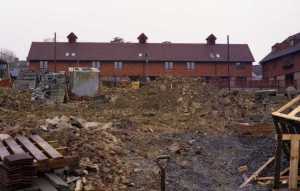
Ok your turn ! The landscape architect for the project, Ian Doughill is seen carrying out a post completion inspection. We maintained the site for a couple of years to ensure complete establishment.

After working a little magic ! This exhibition site is both world famous, fun, hard work, but immensely satisfying to participate in.. a before picture of the Chelsea Flower Show. It’s not your usual mess this time, just an organizational nightmare, with so many firms attempting to bring in supplies and complete their superb work on time.

Chelsea Flower Show ‘Before’ The outlines of the garden can just be seen, with the low wall taking shape on the left hand side. We build a full 6ft (1.8m ) high retaining wall with 3ft (1.2m ) side wall to ‘enclose’ the garden.

The back wall is almost completed. The space has been transformed in three weeks for just four days of exhibition, when over 110,000 people will visit and millions view on television
If you have some ‘Before’ and ‘After’ pictures you would like to share, Ann & I would like to hear from you, just send us a reply with a some contact information on the form below.
We are always looking for sponsors to help with the running costs, this year we thought we would try a small campaign on StartSomeGood.
Our radio show is starting it’s fall funding campaign you can find details at Growing Trends .
Ann & I thank you all so much for your support and comments.
Your message has been sent
Views: 40
-
It’s all in the detail !
Today, I thought some technical stuff was in order.
I’ll try and make it interesting, no doubt you will let me know ?
I spent almost as much time as a Quantity Surveyor as I did a Landscape Architect & Contracts Manager… the worst part was as you grow a business you have to give up various aspects of the work, allowing others to do it instead.
The secret is always find someone better than you to do the job you are relinquishing…
Then catch them doing it right and praise them, whilst simultaneously stopping them from doing it wrong, without to much rancour.
Some years ago, just after I graduated I found myself working in the minor engineering and technical department for a large London Boroughs Parks Department – today you would be called a Landscape Architect, but in those days the Parks Managers wanted folks with hands on experience. This meant we not only knew how to design, but we also knew how to build and even better we knew how to manage the project, including the labour, right down to the work study times it took to build a specific item. We looked after Schools, Parks, Playgrounds, Golf Courses, Verges, Allotments, Open Spaces, Housing Sites and the odd Airfield.
I always wondered why we frantically completed a valuation of work ( right down to the allowed minutes of time each element took) every Monday morning , then rushed the ‘bonus’ sheets over to the treasurers department on Tuesday morning so the staff could be paid their bonuses on time each Friday – hourly paid staff were paid weekly in England ( us salaried staff were paid monthly, we even worked flexi time with every other Monday off, those were the days as they say !).
In later years these standard minute values that had so painstakingly been obtained turned out to be especially useful when pricing large scale contracts, as they were actual times not priced rates.
What was more interesting though was they enabled someone to build up a time and thus rate for all manner of projects. So we could accurately figure out how long a BBQ would take to build for instance, or how long 5 tonnes of tarmac would take 3 men to prepare, lay, roll and clean up.
When semi automatic pricing came along in the form of access based databases it was easy to ‘plug’ these times into the program to use for pricing projects.
This worked great for projects where you weren’t tendering for a job, as you were usually able to produce a fair price, quickly and accurately.
The projects that went out to tender were much more of a lottery, as depending on who was pricing and why, often dictated how the pricing went… No one minds losing a tender by say 1-2% and if everyone has a similar price. It would suggest that the bill of quantities , drawings and specifications are usually going to be an accurate reflection of the work in hand, without any unforeseen errors.
What is intensely irritating from a contracting point of view is when you carefully price a project and then lose by more than 15%, I’ve often wondered why during the assessment phase a tendering body doesn’t add up all the tender values, then divide by the number of tenderers and use that mean figure as the basis for the work – we found that more often than not when we did this in the parks department that was the final cost of the project. I believe the Dutch usually take the second lowest price as this makes it almost impossible to ‘buy’ a job by underpricing !
One of the early ‘tricks’ we learned, was how to be asked to price the better projects if we eliminated the ‘snagging or punch list’. The client put us to the top of their use list. More often than not our site staff ‘snagged’ as they went along, this saved us so much time we gave them a bonus.
Another trick was to put the projects up for a national award – we were fortunate to receive 17 national awards over the years, they were great for staff moral , even better for our clients who then asked us to price some fabulous projects.
We have always tried to be professional, to do the best job we could for a client, avoiding confrontation as much as possible, sure we negotiate hard, but not too aggressively. – the saying ‘Under promise and over perform’ is a great way to work.
The pointing above is typical of our approach, when it comes to the finish it is essential to maintain a clean consistent finish, it looks good, keeps everyone happy..
The real pearls of wisdom are ” Quality is remembered long after the price has been paid ”
Have you visited one of your old projects recently?
What did it look like?
Listen to Ann & Chris at Growing Trends
Your message has been sent
Views: 73








